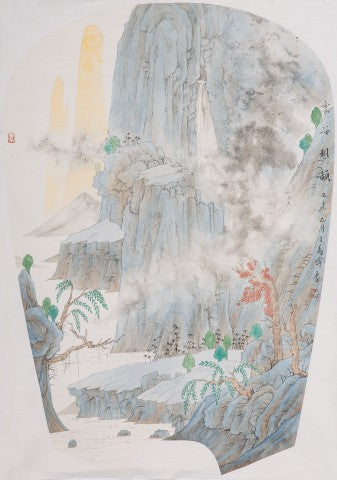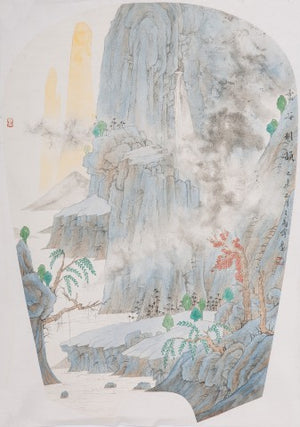Ancestral Temple Side Two
Funing Xia
Artwork Details
Artwork Description
Title: Ancestral Temple Side Two
Artist: Xia Fu-Ning (Chinese, b. 1962)
Date: 2014
Medium: Oil on canvas
Dimensions: 25.6 x 23.6 in (65 x 60 cm)
Artwork Identification
Ancestral Temple Side Two is an evocative oil painting by Chinese contemporary artist Xia Fu-Ning. Measuring 65 by 60 centimeters, the composition presents a quiet, contemplative view of an architectural fragment—likely a side wall or adjoining passage of a traditional ancestral temple. Executed in nuanced tones and textured layers, the piece reveals Xia’s meditative brushwork and spatial restraint. The surface suggests both weathered permanence and ephemeral light, creating an atmosphere of spiritual calm and timeless observation.
Artistic Style and Influences
Xia Fu-Ning’s work is shaped by his deep engagement with classical Chinese philosophy—particularly the Taoist thought of Laozi and Zhuangzi. These influences manifest in his minimalist compositions, naturalistic textures, and the philosophical stillness that permeates his canvases. In Ancestral Temple Side Two, the understated palette and structural simplicity reflect a sensibility akin to Chinese literati painting, while the medium of oil places the work within a dialogue between Eastern metaphysics and Western technique. Xia’s art frequently explores spatial ambiguity, inner quietude, and the invisible currents of thought and memory.
Historical Context
Born in Nanjing in 1962, Xia Fu-Ning matured as an artist during the reform era of the 1980s, a pivotal period in Chinese art history when traditional techniques were reexamined and global influences absorbed. During his tenure as a professor at Tianjin Polytechnic University, Xia helped shape the emerging discourse around contemporary oil painting in China. His subsequent relocation to Song Zhuang—Beijing’s most important artists’ enclave—placed him at the center of a thriving experimental community. Ancestral Temple Side Two reflects this mature phase, where philosophical depth, historical resonance, and personal quietude converge.
Provenance and Authenticity
The work comes from a private collection and is attributed directly to the artist, who lives and works in Song Zhuang. Xia Fu-Ning’s paintings have been exhibited in regional and academic galleries, particularly in Beijing and Nanjing, and his presence in Song Zhuang situates him among the country’s foremost independent painters. The artist’s works are known for their authenticity, often acquired directly from his studio or through curatorial projects with universities and local art institutions.
Condition and Conservation
The painting is in very good condition. The oil surface is stable, with no visible cracks, discoloration, or restoration. The paint layer retains its natural texture and intentional brushwork without interference. The canvas is properly stretched and structurally sound. Minor edge wear may be visible at the corners if unframed, but the artwork overall has been preserved with care.
Artistic Significance
Ancestral Temple Side Two embodies Xia Fu-Ning’s philosophical approach to space, memory, and silence. As an artist deeply engaged with Taoist thinking, his work offers viewers a pause from visual noise—a space for reflection rooted in both cultural tradition and contemporary practice. The painting’s subject—a modest architectural form—becomes a vessel for timeless values and metaphysical inquiry. In an art market increasingly attentive to independently situated Chinese painters of the 1980s generation, Xia’s work represents an important bridge between intellectual discipline, aesthetic subtlety, and spiritual depth.


